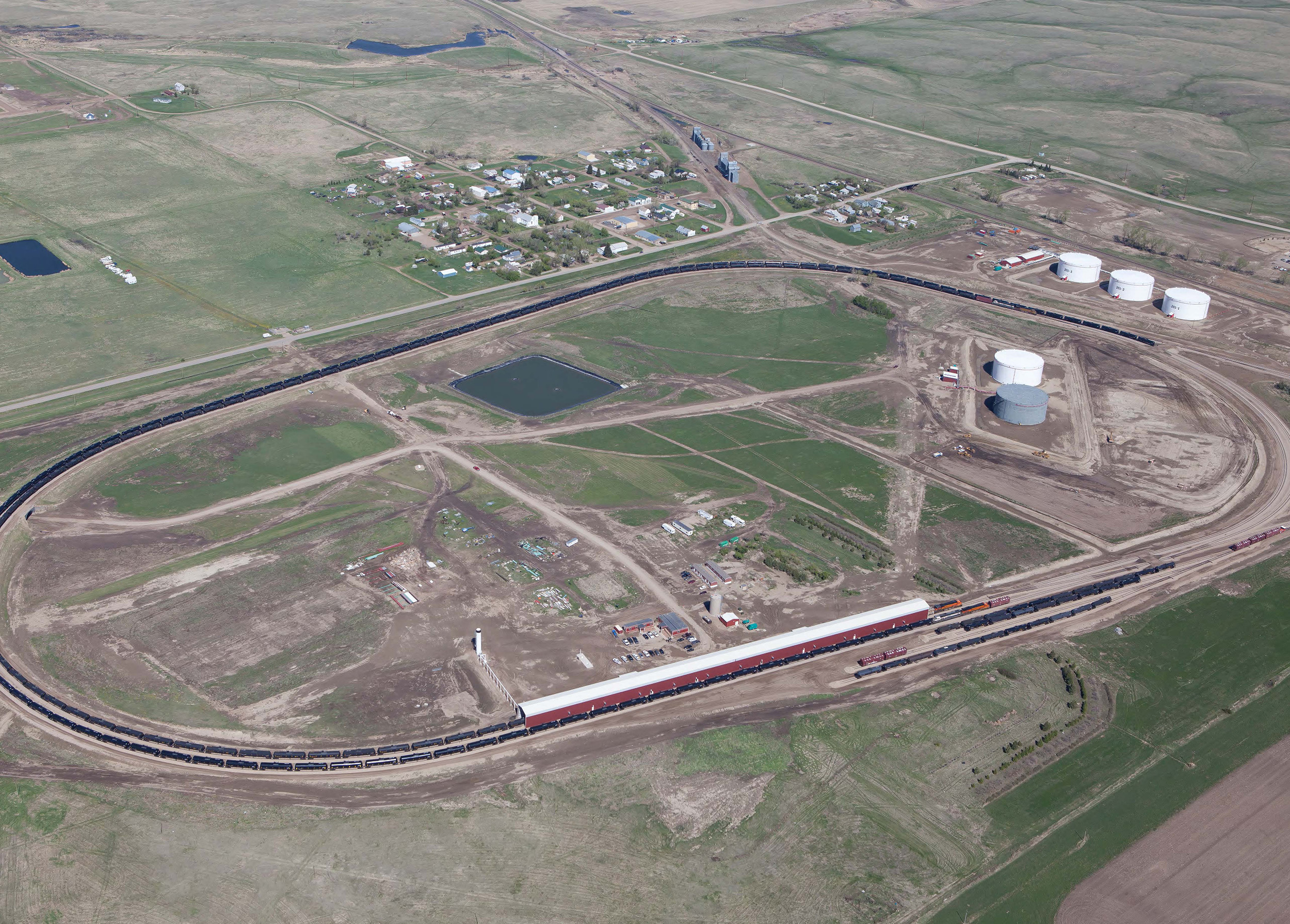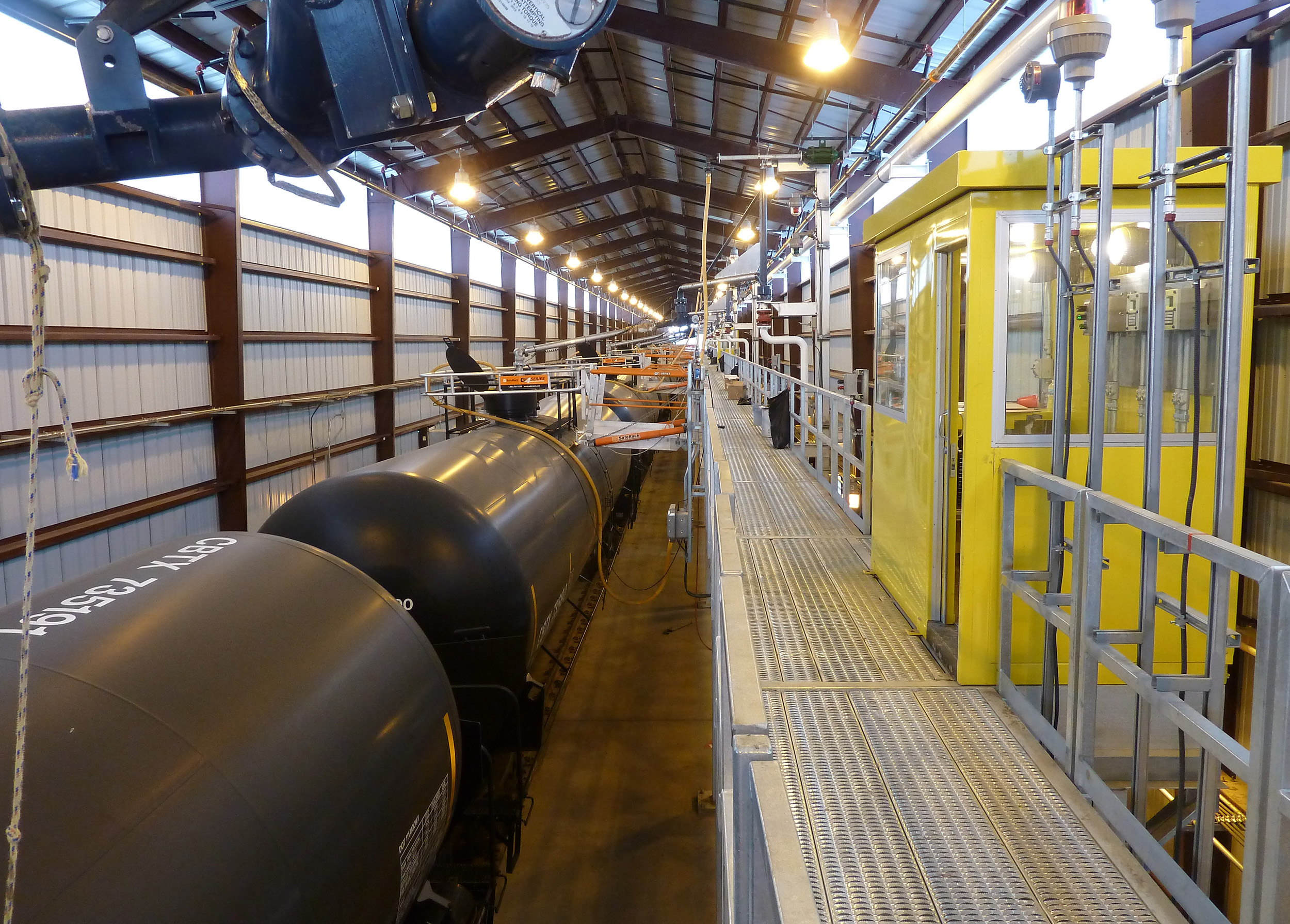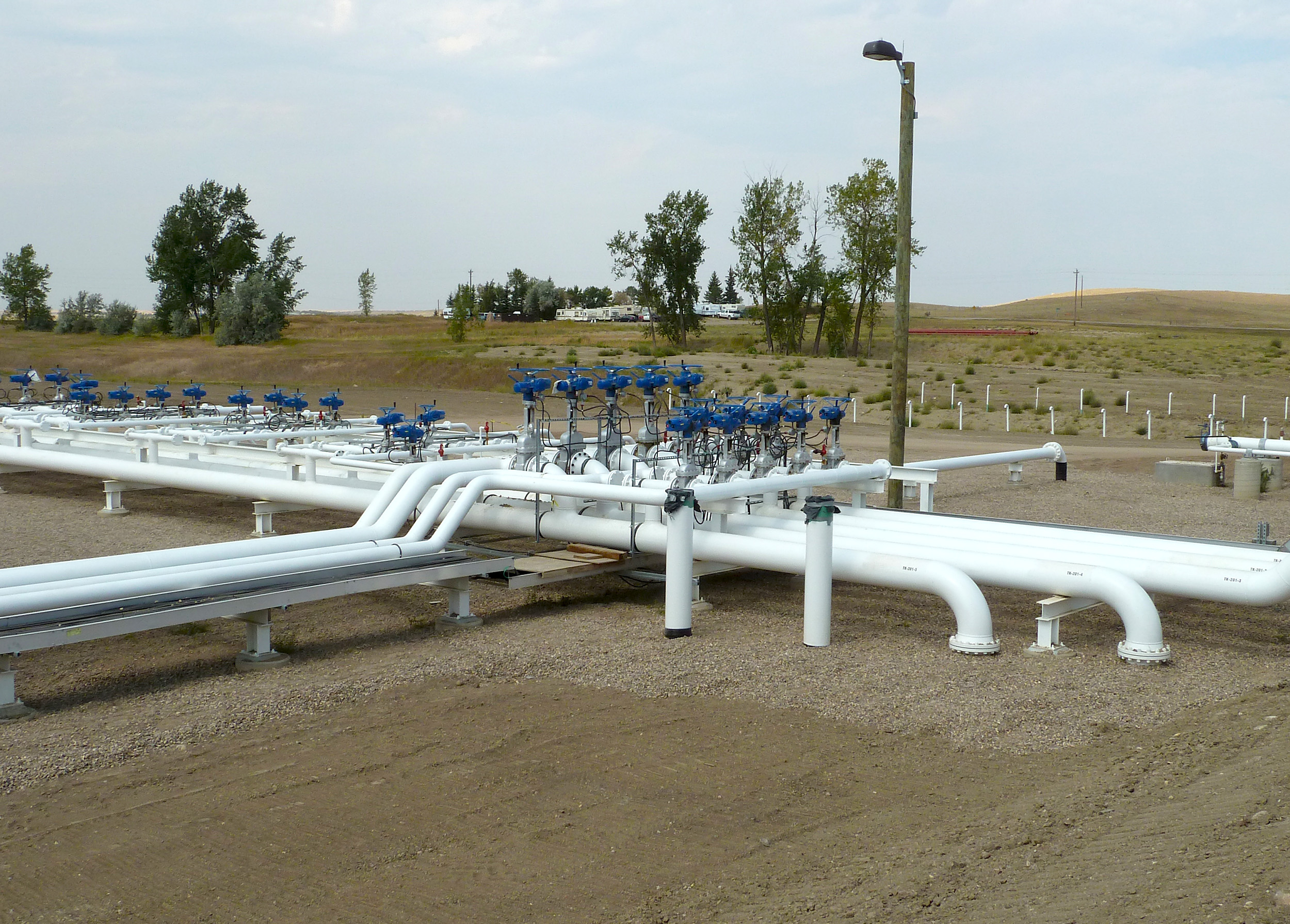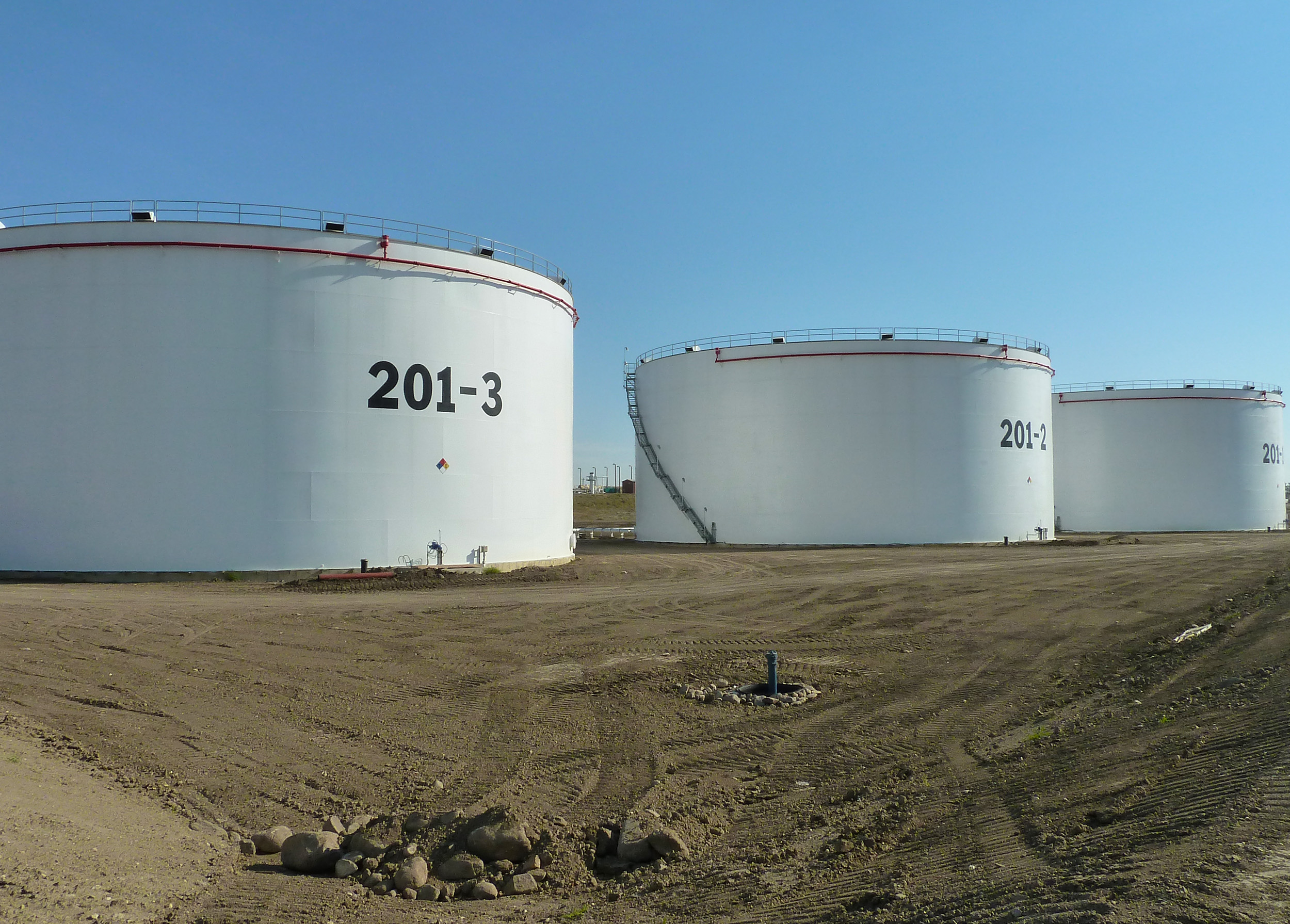Rangeland Energy in Epping, ND
This is the first open-access crude oil marketing facility for the loading of crude oil into a unit train, where it is transported to various refinery locations throughout the United States. The facility is capable of loading two 100-car unit trains per 24-hour period. The facility includes multiple crude oil storage tanks, a covered loading platform, pumps piping, valves, actuators, loading arms, air compressors, vapor flares, 8-lane truck unloading platform, truck loading platform, all track related elements, including sub ballast, ballast, ties, track, and mainline switches provided by BNSF; pad mount transformers; lighting poles; electric switch gear; PLC control system; secondary containment liners; administration and crew change buildings.
Wilson & Company was responsible for all mechanical and electrical engineering for pumps, piping manifolds, motor operated valves and system controls design and all site mechanical and electrical utilities as well as track work, including the design of double-track loop tracks, mainline leads and switches, crude oil storage tanks, rail loading platform, truck loading and unloading platforms, custody transfer metering, sampling system, administration, and crew change buildings.
Wilson & Company evaluated the rail operations, developed an expansion design, and provided construction-related services for new receiving and departure (R&D) tracks servicing the facility.
The existing facility (double 10,000’ loop tracks) was designed for loading one unit train per day. The goal of loading two-unit trains per day required developing a new rail operating plan with proposed trackage and increasing the loading spots from 14 spots to 20 spots. The design included increasing the pumping capacity and loading spots and adding R&D Tracks to the east along the BNSF mainline. The expansion included a 3-mile lead track, two proposed R&D tracks, and allows for additional R&D tracks to be added in the future. The 9,000’ R&D tracks are each capable of storing a unit train for processing at the facility. Upon completion of construction, the facility reported a peak of over 201,000 barrels (nearly 3 unit trains per day) of crude oil loaded in a 24-hour period.
Rail, drainage, environmental mitigation, illumination, utility relocation, signal coordination, property acquisition, and zoning requirements were included in the design process. Coordination with state and local governments was provided to increase sight distance for the rail crossing on 60th Street. Wilson & Company also worked with the pipeline and transmission line companies to relocate their utility lines without impacting the construction schedule.
During construction, Wilson & Company provided ongoing solutions to property acquisition issues in order to maintain the desired schedule.




